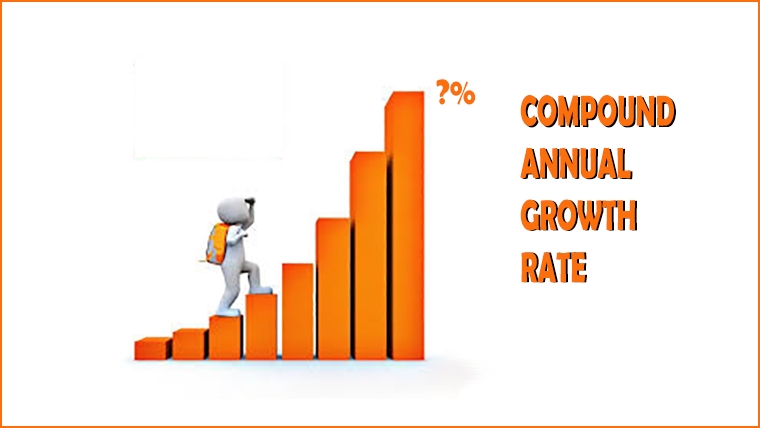
It is undoubtedly a myth, but popular legend is that Albert Einstein once said "Compound interest is the eighth wonder of the world. He who understands it, earns it; he who doesn't, pays it".
It matters not whether Einstein said it or not. But interest-on-interest, growth-on-growth has fascinated people for a long time.
We all know it can't continue endlessly, as the Islamic wheat and chessboard parable clearly shows.
But it is relevant in human and economic cycle timescales.
And people want to know the answer.
For example, what is the annual growth rate? How much will my investment grow to, at an assumed rate? How long will it take for my investment to reach a target?
These are all questions a CAGR calculator can answer. And we have one we prepared earlier (!)
CAGR stands for 'Compound Annual Growth Rate' and is a useful tool for personal investment purposes.
CAGR is the average annual growth rate of an investment over a specified period of time longer than one year. It represents one of the most accurate ways to calculate and determine returns for individual assets, investment portfolios, and anything that can rise or fall in value over time. CAGR is a term used when investment advisors tout their market savvy, and funds promote their returns.
It gives a smoothed answer, one that is simplified to represent an effective straight line equivalent result. And it is widely and easily understood, by experts and by novices.
But it doesn't reflect volatility. Nor is it useful in any way to ascertain risk. It is just a piece of neat, simple arithmetic. It is no substitute for proper investment analysis, one that does incorporate risk and volatility analysis.
Our CAGR tool* gives you three separate ways to get an answer:
- to find the annual percentage growth rate over the whole term,
- to work out the value of a compounding annual growth rate, or
- to discover how long a targeted CAGR will take to achieve your goal.
You can find it here.
But never forget, "growth" can work in reverse. Of course, it is no longer 'growth' then, but decline and atrophy. And that can be as relentlessly powerful, maybe even more so on the way down as on the way up. On the way up, the energy is backstopped by confidence. On the way down there is no confidence restraining its fall, so that can be unnervingly quick.
* This calculator was developed by Calculate.co.nz and is in our calclulator toolbox as part of our partnership with them.
5 Comments
So we live in an decades long environment of descending rates of return and you have a fixed rate calculator. Why not put some real mental energy into defining the decades long decline in interest rates (reflecting the end of the finite model that the chessboard parable represents) with a calculator where you can input a descending rate of return?
But it is refreshing that you outline the risk of negative rates. What happens in a negative rate environment? Can asset prices be sustained? Can the monetary system be maintained? What trickery might be used to maintain it? Do you have to sell assets for income?
How about compound debt on the other side of the ledger to compound interest? Then leverage on top of that? I mean a 20% deposit on a house represents 4:1 leverage, leveraged debt. It is the leverage that bites more than the interest when it goes into reverse. And it will reverse.
Did you try it? That tool does work equally well in reverse, enabling you to calculate the rate of atrophy (negative 'growth').
This calculator is missing inflation adjustment.
It's all well and good investing for a goal. But what does it matter if the central bankers have made the goal worthless by the time you arrive there?
An inflation adjusted option would be great. As well as being able to add $ to the investment over time (Additional $ per week / month / year etc). Cheers!
I recall the standard calculations in Johannesburg being on an NACM basis ( a term I'd never heard of until having to use it!) Net Annual Compounded Monthly was what you looked at for a Term Deposit.
Mind you that was important when the inflation rate was ~20% p.a. and the 1 Month TD was ~25%!

We welcome your comments below. If you are not already registered, please register to comment.
Remember we welcome robust, respectful and insightful debate. We don't welcome abusive or defamatory comments and will de-register those repeatedly making such comments. Our current comment policy is here.